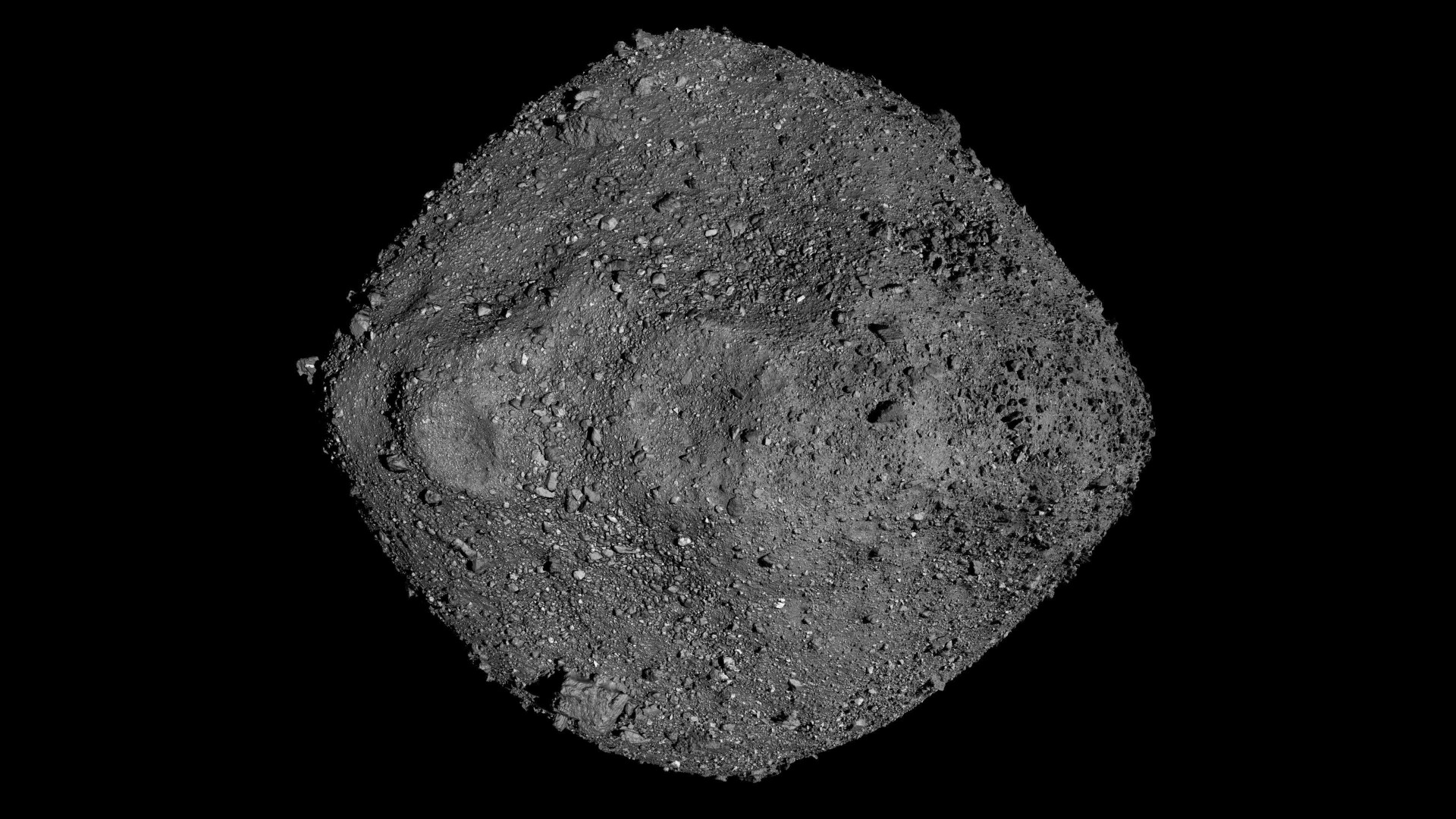Why are asteroids and comets such weird shapes?
The less massive an object is, the less round it is.

A rubber duck. A spinning top. A pair of pancakes. These are just a few of the shapes astronomers have observed across the solar system.
While planets and some moons are almost perfectly spherical, the smaller bits of the solar system, such as asteroids and comets, come in all different shapes. But why is that?
It all comes down to mass and gravity, said Alessondra Springmann, a researcher who studies asteroids at the Lunar and Planetary Laboratory at the University of Arizona. Gravity shapes large objects, like planets and some moons. "If you've got enough mass, gravity is going to dominate your shape," Springmann said.
Related: Why do the planets in the solar system orbit on the same plane?
As soon as a structure gets big enough, gravity pulls everything equally toward the body's center of mass. That gravitational force creates a spherical shape.
Then there are the asteroids, comets and other small bodies of the solar system, such as some Kuiper Belt objects (KBOs), which orbit the sun beyond Neptune. These objects are made up of the leftovers from the solar system's formation, after the growing planets swept up most of the solar system's original material. These small bodies are too small for gravity to affect their shape, Springmann said.
With no shaping from gravitational forces, other factors come into play. Some asteroids are lumpier and less round because they've crashed into each other, Springmann said. The KBO Arrokoth, for example, is shaped like two pancakes stuck together. Scientists think that Arrokoth formed from two objects slowly twirling around each other closer and closer until they collided and stuck together.
Get the world’s most fascinating discoveries delivered straight to your inbox.
The asteroids Bennu and Ryugu, meanwhile, are roughly diamond shaped rather than round. Their shapes result from their geological makeup. Bennu and Ryugu "are rubble piles," Springmann said. "They are just piles of gravel." These two asteroids are extremely porous, and held together by forces other than gravity or friction, such as the weak van der Waals force. The van der Waals force acts on particles themselves, attracting individual particles together. Scientists suspect these two asteroids are shaped like diamonds because their rotational speeds are affected by how the asteroids absorb and emit radiation from the sun.
Then there's Comet 67P/Churyumov-Gerasimenko, which is famously shaped like a rubber duck. Comets come in weird shapes not just because of their size but also because they're made mostly of ice (both water ice and other types of ice), Springmann said. When comets get close to the sun, that ice sublimates — it becomes gas, skipping the liquid phase — and jets into space, creating a temporary atmosphere around the comet called a coma.
"Those jets can form all sorts of structures," on the comet’s surface, Springmann said. On 67P, "you've got all these active surface geology processes going on," which result in some weird surface shapes, like cracks and fissures.
Scientists have suggested that 67P, like Arrokoth, formed when two objects collided and stuck together.
Originally published on Live Science.

JoAnna Wendel is a freelance science writer living in Portland, Oregon. She mainly covers Earth and planetary science but also loves the ocean, invertebrates, lichen and moss. JoAnna's work has appeared in Eos, Smithsonian Magazine, Knowable Magazine, Popular Science and more. JoAnna is also a science cartoonist and has published comics with Gizmodo, NASA, Science News for Students and more. She graduated from the University of Oregon with a degree in general sciences because she couldn't decide on her favorite area of science. In her spare time, JoAnna likes to hike, read, paint, do crossword puzzles and hang out with her cat, Pancake.





